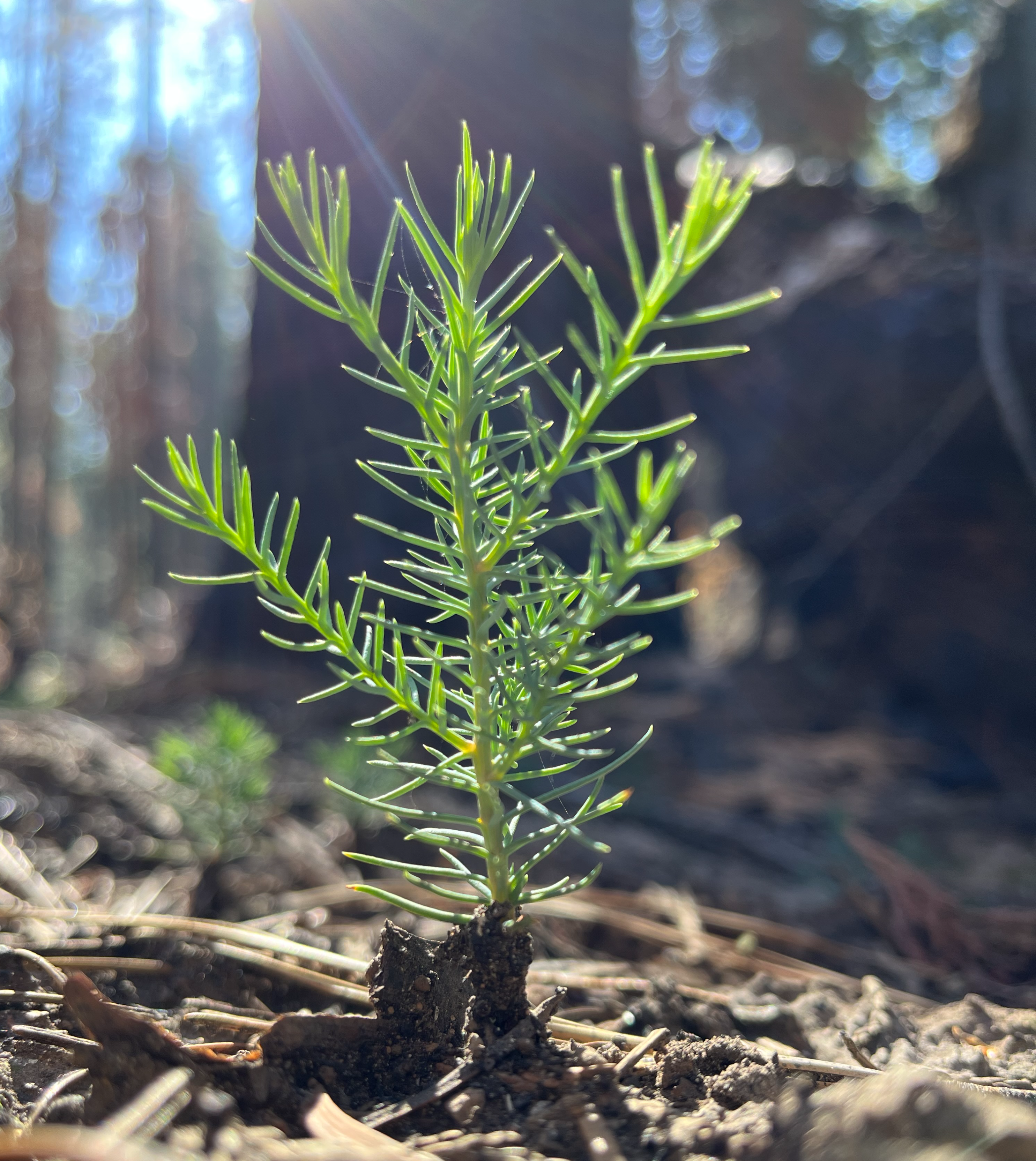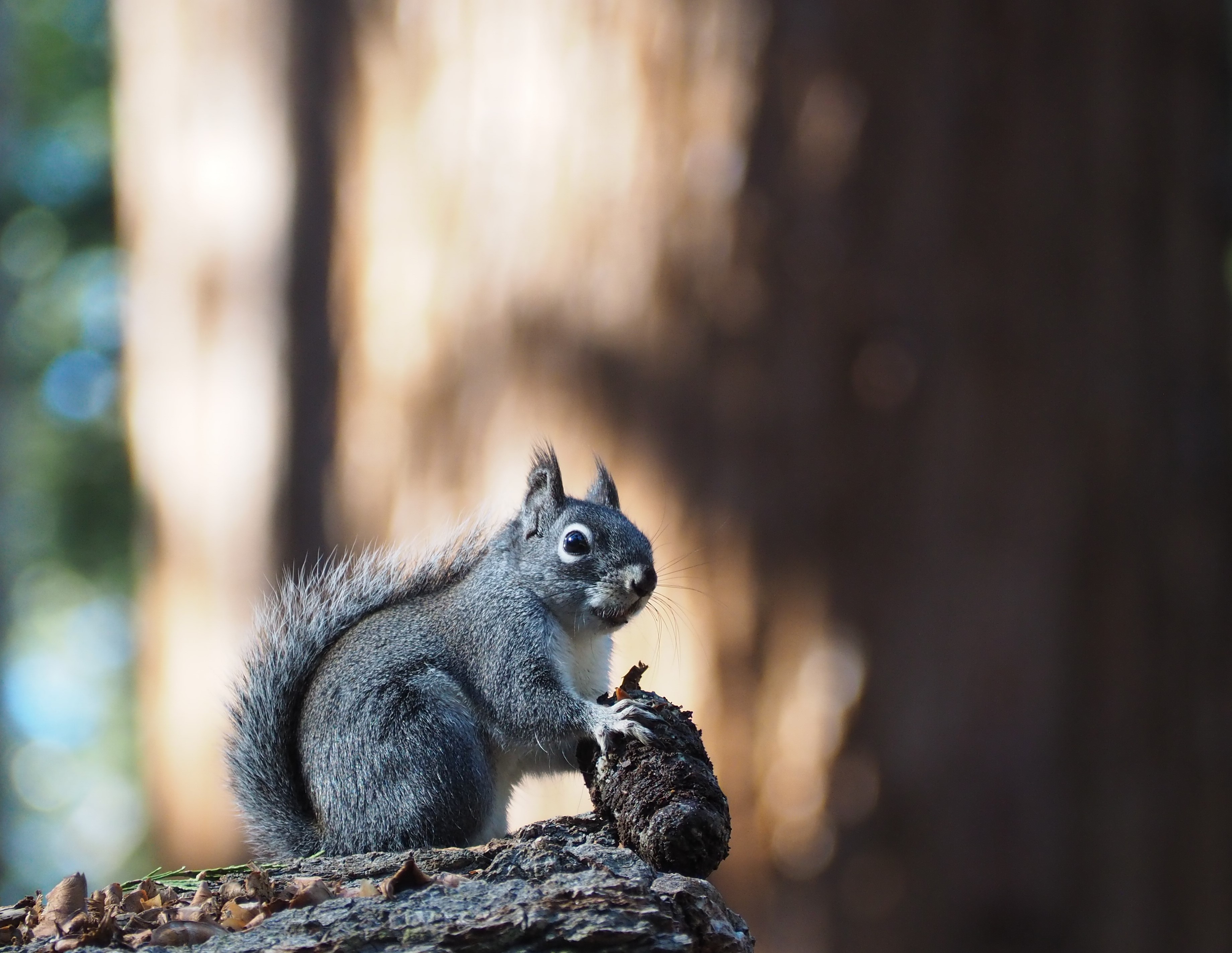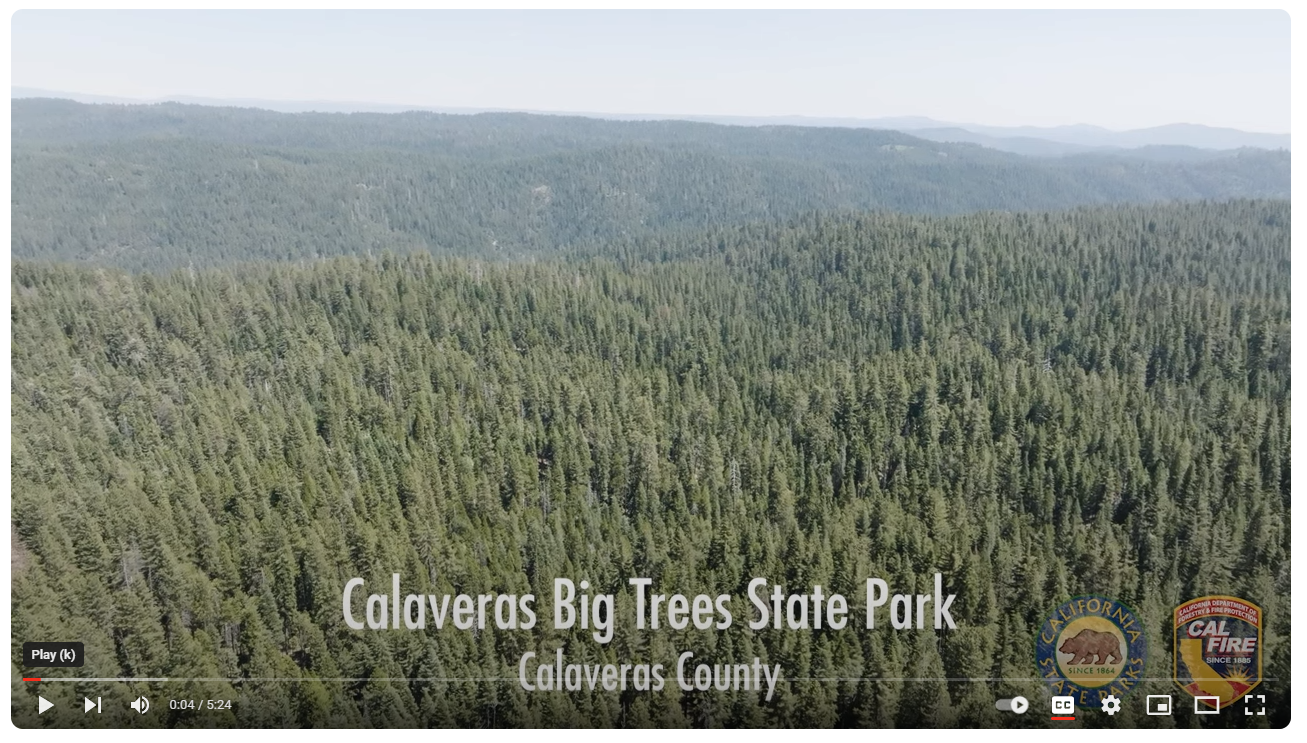Prescribed Fire at Calaveras Big Trees
What is a prescribed fire?
Prescribed fire is planned and includes a written scientific prescription for each burn. The prescription considers weather, available resources, safety, and ability to meet burn objectives or goals. A burn plan must be completed, and each prescribed fire must meet all the conditions identified in the checklist before ignition. There are two types of prescribed fire – broadcast burning and pile burning.Prescribed Fire and Giant Sequoias
Prescribed fire is an important forest management tool and part of the natural ecosystem for giant sequoia. Giant sequoias depend on fire for their long-term survival. Heat from fire opens cones and helps release seeds. Fire also creates the right conditions needed for large numbers of giant sequoia seedlings to sprout. It clears debris, creates a mineral soil seed bed, and allows sunlight to reach the forest floor.

Is all fire good for giant sequoias?
No. In the last few years, nearly 20 percent of giant sequoias in California forests have been killed by wildfire. Please visit the Giant Sequoia Lands Coalition to learn more about the threats to giant sequoias.
Prescribed Fire Helps Fight Wildfire
California’s historical forests looked very different to the forests we see today. Prior to European settlement, giant sequoia in the Sierra Nevada evolved under an active fire routine where the fire happened, on average depending on the site, every 7 to 15 years. Interference and suppression of fire for more than a century has created an overstocked landscape. Prescribed fire is a proactive tool to protect the park and neighbors from the effects of wildfire by reducing fuel that can help slow or stop wildfires. Prescribed fire also costs a fraction when comparted to fighting a large wildfire.
Prescribed Fire Increases Forest Diversity
Prescribed fire can create a mosaic of diverse habitats for plants and animals. Fire can increase complexity, improve wildlife habitat, remove diseased materials, and restore nutrients to the soil. Ecosystems are dynamic and fire can bring on rapid change. While fire may kill some trees and plants, it allows new plants to grow. These plants provide new food and cover for wildlife.
Meet the Crew
The crew of a prescribed fire at Calaveras Big Trees State Park consists of California State Park staff and partners, like California Department of Forestry and Fire Protection (CAL FIRE). Crew positions include:
- Burn Boss – is the incident commander who oversees every detail of the prescribed fire. They write plans, organize every aspect, communicate, write the prescription, and lead all personnel.
- Firing Boss – works for the Burn Boss and oversees the prescribed fire ignition. They manage the ignitions crew and apply fire to the ground.
-
Holding Boss – works for the Burn Boss and leads the holding crew. The holding crew is responsible for keeping the fire within the planned prescribed fire unit
-
Fire Effects Monitor – moves throughout the prescribed burn and communicates and collects real time data on weather, smoke, fire behavior, and fire effects. This helps the Burn Boss, Firing Boss, and Holding Boss make real time decisions based on changing conditions.

.JPG)

.JPG)
